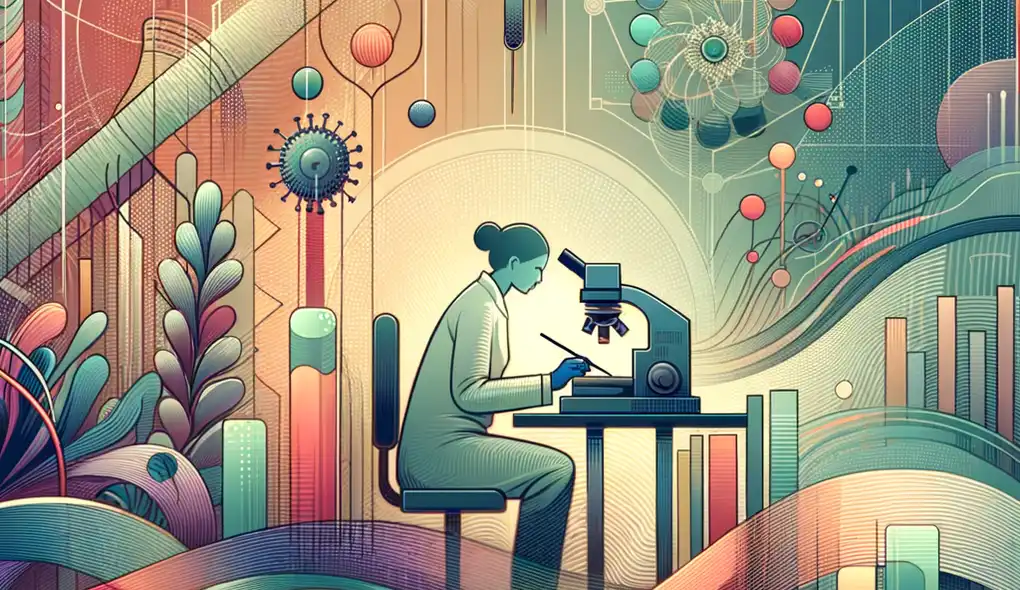What are some strategies you use for troubleshooting and problem-solving in microarray data analysis?
Microarray Analyst Interview Questions
Sample answer to the question
When troubleshooting and problem-solving in microarray data analysis, some strategies I use include thoroughly reviewing the experimental design and data quality, conducting statistical analysis to identify patterns or anomalies, and consulting with colleagues or experts in the field for insights and suggestions. Additionally, I often utilize bioinformatics tools and software to preprocess the data, perform differential expression analysis, and visualize the results. Communication is also crucial in this process, as I ensure clear communication with collaborators and team members to address any issues and find effective solutions.
A more solid answer
When troubleshooting and problem-solving in microarray data analysis, I employ a systematic approach to ensure accurate and reliable results. Firstly, I thoroughly review the experimental design, data quality, and preprocessing steps to identify any potential sources of variation or bias. To address statistical challenges, I utilize a range of techniques such as normalization, batch effect correction, and differential expression analysis. In addition, I am proficient in using R, Python, and Perl for bioinformatics analysis, where I leverage existing packages and develop custom scripts when needed. Collaboration and communication are integral to my problem-solving process, as I actively seek input from colleagues and domain experts to gain different perspectives and insights. Moreover, I am experienced in leading projects, mentoring junior analysts, and contributing to the development of analytical tools and processes.
Why this is a more solid answer:
The solid answer expands upon the strategies used for troubleshooting and problem-solving in microarray data analysis and provides more specific examples. It also emphasizes the candidate's expertise in statistical data analysis and bioinformatics, as well as their ability to lead projects and mentor junior analysts. However, it can still be improved by providing more specific details about past projects related to microarray data analysis and highlighting the candidate's experience in collaborating with multi-disciplinary teams.
An exceptional answer
When troubleshooting and problem-solving in microarray data analysis, I follow a comprehensive approach that combines scientific rigor, statistical expertise, and effective collaboration. Initially, I meticulously assess the experimental design, data quality, and preprocessing steps to ensure accurate and reliable results. Utilizing statistical methods like normalization, clustering, and differential expression analysis, I navigate the complexities of microarray data and identify biologically relevant patterns and outliers. My proficiency in programming languages like R, Python, and Perl enables me to efficiently implement existing algorithms and develop custom scripts tailored to specific research questions. Harnessing the power of bioinformatics tools and databases, I integrate multi-omics data to gain deeper insights into gene expression, genotyping, and genome sequencing. Collaboration is integral to my problem-solving approach, as I actively engage with colleagues, statisticians, and domain experts, fostering an environment of knowledge exchange and innovation. Moreover, my experience in leading projects, mentoring junior analysts, and contributing to the development of analytical tools positions me well for the responsibilities of a Senior Microarray Analyst.
Why this is an exceptional answer:
The exceptional answer provides a comprehensive and detailed strategy for troubleshooting and problem-solving in microarray data analysis. It demonstrates the candidate's scientific rigor, statistical expertise, programming skills, and ability to integrate multi-omics data. The emphasis on collaboration and knowledge exchange highlights the candidate's ability to work in a multi-disciplinary team environment. Additionally, the mention of leading projects, mentoring junior analysts, and contributing to the development of analytical tools showcases the candidate's leadership and expertise in the field. This answer effectively addresses all the evaluation areas mentioned in the job description.
How to prepare for this question
- Familiarize yourself with common challenges and pitfalls in microarray data analysis, including batch effects, normalization, and differential expression analysis.
- Stay updated with the latest advancements in microarray technology, statistical analysis methods, and bioinformatics tools.
- Gain hands-on experience with programming languages commonly used in bioinformatics, such as R, Python, or Perl.
- Seek opportunities to collaborate with researchers from diverse backgrounds to enhance your problem-solving and communication skills.
- Reflect on past experiences where you encountered troubleshooting and problem-solving in microarray data analysis and prepare specific examples to share during the interview.
What interviewers are evaluating
- Microarray data analysis
- Statistical data analysis
- Bioinformatics
- Collaboration and communication
Related Interview Questions
More questions for Microarray Analyst interviews